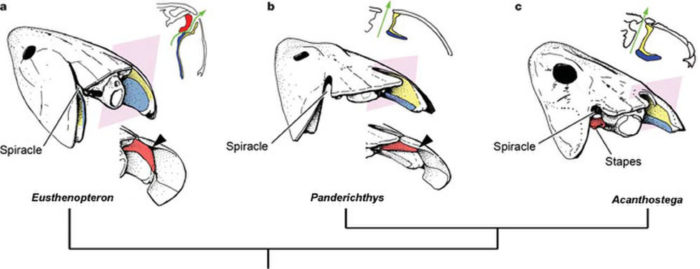By Fariha Fawziah
Recent research has revealed that human ears may have evolved from ancient fish gills. Evolution is when species develop their gene frequencies over a period of time. It’s the process by which different kinds of living organisms are thought to have diversified from earlier forms during the history of the ear.
Here is an embryo comparison. An embryo is an unborn (or unhatched) animal, or human young in its earliest phases. Embryos of a diverse group of of animals such as, mammals, birds, reptiles, fish, etc. look very similar and it is often difficult to tell them apart. Many traits of one type of animal appear in the embryo of another type of animal. This suggests that the animals are similar and that they are related by having common ancestors. This may prove that we human beings may not be that different from animals after all.
Since most species on land have certain bone structures for hearing, scientists have found that ancient fish used similar structures to breathe underwater. This may suggest that ear bone structures were developed even before any creatures got on land.
Researchers examined a 370-million-year-old fossil fish called Panderichthys. They compared its bone structures to those of another lobe-finned fish called Eusthenopteron, as well as to an early land animal, to look for any similarities.
 Researchers found out that Panderichthys actually had a bone structure that transitioned from both of the other two species.
Researchers found out that Panderichthys actually had a bone structure that transitioned from both of the other two species.
In Acanthostega, a tetrapod, the bone developed a larger cavity in what is now part of the middle ear in humans and other animals. This study also shows a gap, or what they call the “missing link,” between the bone structures of fish gill openings, and ears between the different species.
Furthermore, the purpose of the bone structure of tetrapods is also unclear. Early tetrapods may have used it for some ventilation function, instead of for hearing. Clearly, there is more to discover about this theory.
[link: https://www.livescience.com/558-human-ears-evolved-ancient-fish-gills.html]

This image shows how the hyomandibula receded in fish to create a wider ear opening in early land animals.
(Credit: © Nature)